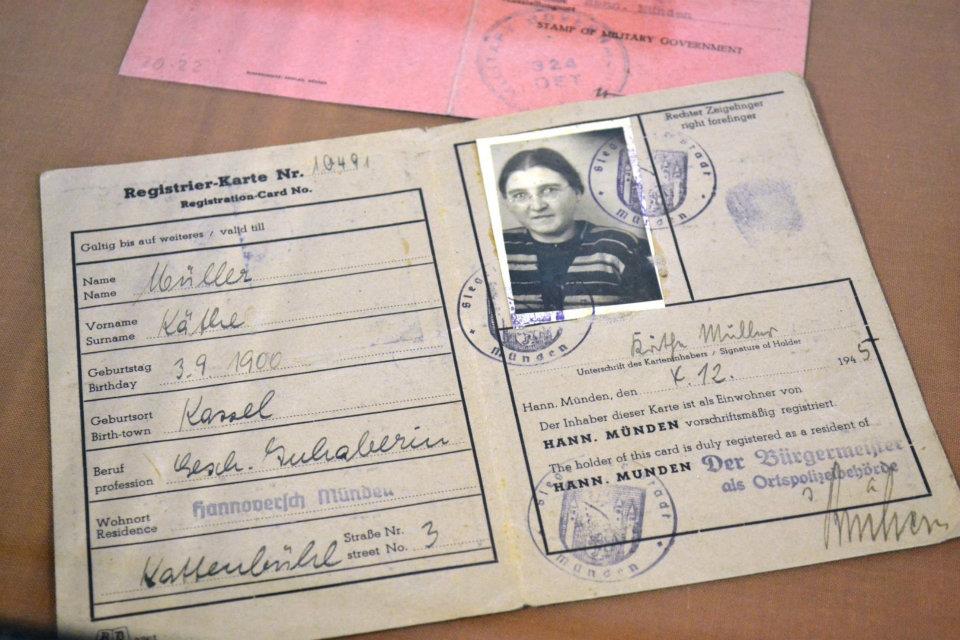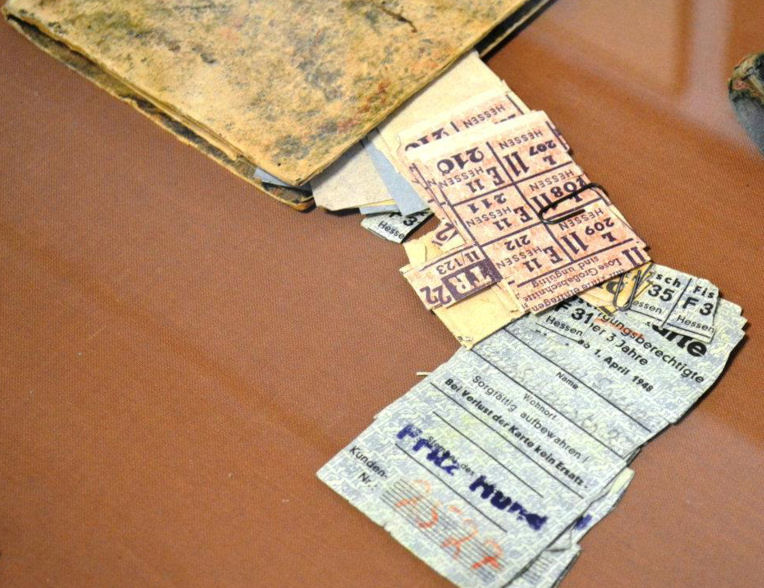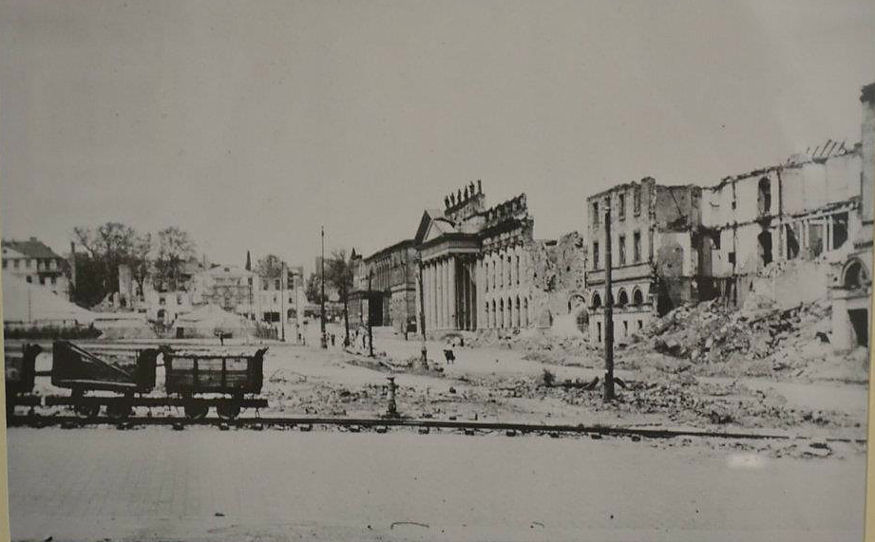

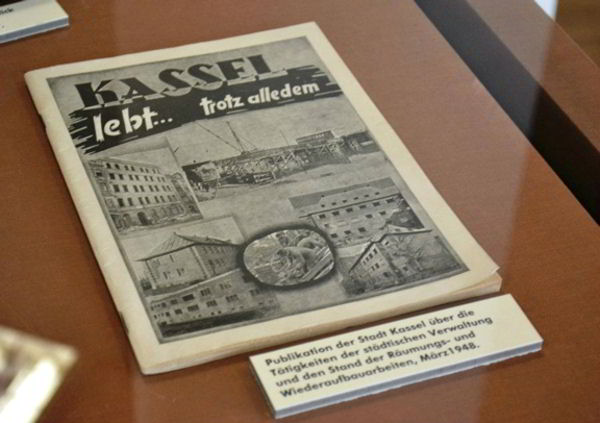
Kassel Lives
I went to the
exhibition today and spoke
to Mr. Link, the museum's director. I was allowed to take pictures and
he said it would be okay if we want to use them for the website as long
as we mention "Stadtmuseum Kassel" as our source. Mr. Link is really
nice and supportive! He remembered me from the last time I'd visited
the museum for the exhibition about American life in Kassel after World
War II."
At left is a publication by the city of Kassel about the clearing- and reconstruction workings, March 1948.

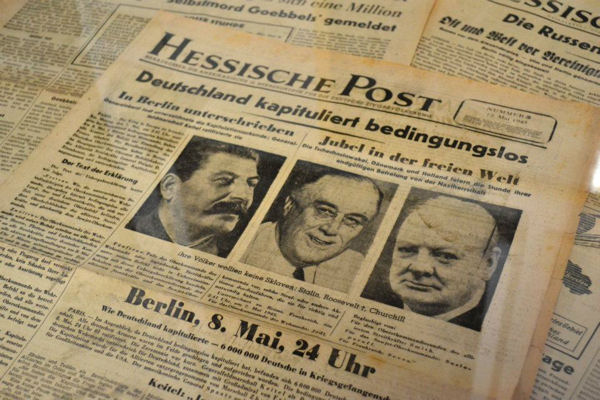
Editions of the "Hessische Post", 1945.
This edition, meant for the German
population, was released by the U.S. occupation army even before the
German capitulation

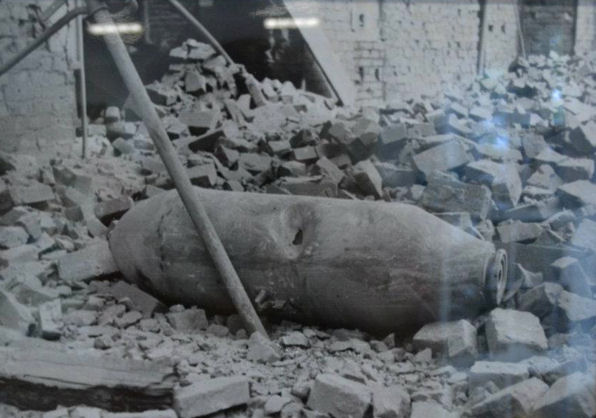
Dud bomb at the station building ,
April 1944

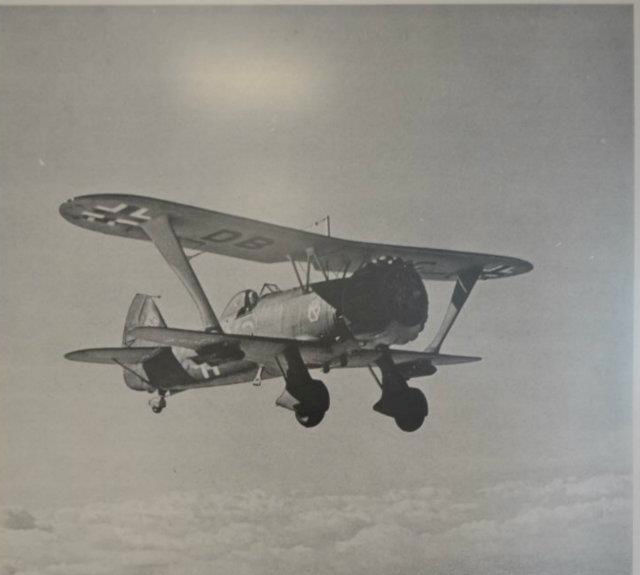
Henschel ground attack aircraft (Schlachtflugzeug Henschel HS 123

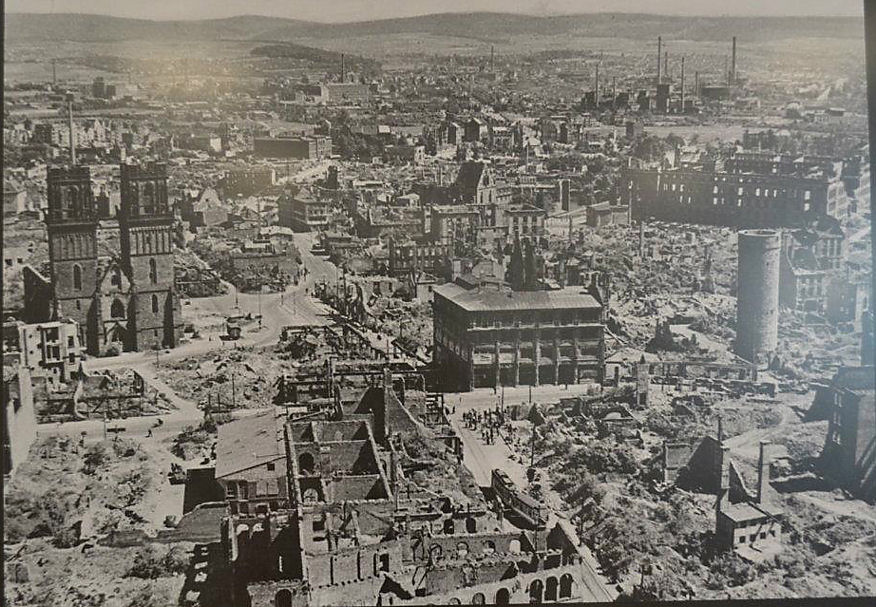
One of the most famous pictures of
photographer Walter Thieme: view from the steeple of the Lutherkirche
to the direction of Altmarkt, 1946/47. The old Kassel downtown, a field
of ruins. On the left remains of the Martinskirche, on the right, the
Druselturm.

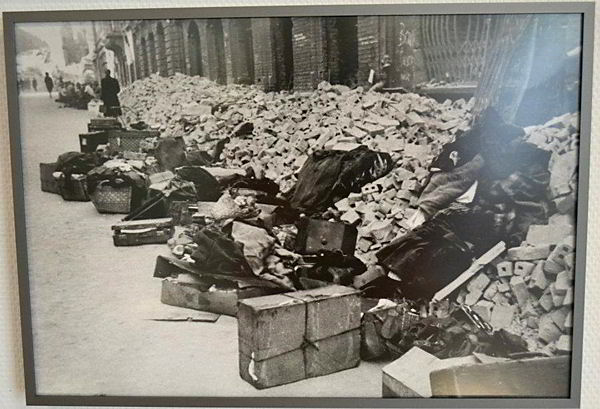
Saved hand luggage from victims of the
air raid from October 22nd 1943 at Moltkestraße. The street
doesn't exist anymore. It was located near Untere
Königsstraße, Kurt-Schuhmacher-Straße,
Jägerstraße


Frontier card and register card (see next picture!) of Käthe Müller from Kassel, 1945 and 1946. During the early postwar years, Mrs. Müller commuted between Kassel (U.S. occupation zone), where she went to work, and Hann. Münden (British occupation zone), where she had been evacuated to. Until 1947, these documents were required for crossing occupation zones!
